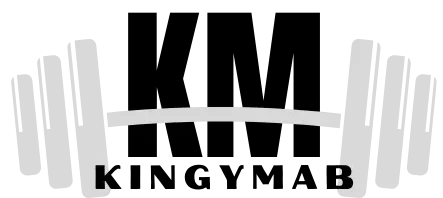Injuries are an unavoidable part of an athlete’s career, but rehabilitation does not have to be lengthy. With new technologies, athletes can now recover faster and reduce their injury risks.
But how do these tools impact their rehabilitation process? Can they enhance performance and shorten recovery times? Tracking recovery progress in real-time has become essential for athletes looking to stay ahead.
As they deal with the physical challenges of healing, modern solutions offer hope for a quicker return to peak form. In this article, we’ll explore how cutting-edge tools are giving athletes an edge in their recovery journey.
Tracking Progress and Recovery with Wearable Devices
Wearable technology has revolutionized how athletes monitor recovery. Fitness trackers and smartwatches provide key metrics like heart rate and sleep patterns. Athletes can use this data to adjust training and rehabilitation.
Forbes notes that wearable health technology and electronic health records work together to generate real-time patient data. These devices give reliable information, allowing health systems to follow trends and make better decisions. Health professionals may track critical parameters such as heart rate, sleep quality, and calories.
These tools also track muscle fatigue, alerting athletes to possible injury signs. With real-time feedback, athletes can make informed decisions about their recovery. They can avoid overtraining and optimize their rehab sessions.
Wearables allow for a better understanding of how the body responds to recovery programs. This ongoing monitoring helps athletes stay on track and prevent future injuries. Athletes can fine-tune their recovery to maximize results with the insights wearables provide.
How do wearables improve rehabilitation for previous injuries?
Wearables track movement efficiency and biomechanical imbalances caused by past injuries. Real-time gait analysis and motion tracking help athletes modify rehabilitation exercises to correct weaknesses. By targeting areas of instability, these devices reduce the risk of re-injury and ensure a more balanced return to activity.
Cooling Down the Healing Process with Cryotherapy
Cryotherapy has grown in popularity among athletes as a rehabilitation treatment. This cold treatment decreases inflammation and promotes recovery. Athletes use cryotherapy to alleviate pain and swelling in injured areas.
WebMD states that whole-body cryotherapy is a non-medical treatment available at gyms, spas, and wellness centers. Studies show it may help reduce inflammation, but it isn’t FDA-approved for any condition. Unlike medical therapies, WBC doesn’t require a doctor’s prescription or professional supervision.
The cold constricts blood arteries, which reduces inflammation. This process also numbs pain, making it easier to manage injuries. Cryotherapy is useful for muscle soreness after intense workouts or games. It is known to minimize delayed onset muscle soreness, helping athletes to recover more quickly.
When the body heats up after therapy, blood flow improves, which promotes healing. Cryotherapy is now an essential part of many athletes’ recovery routines, helping them get back to training faster.
How does cryotherapy impact sleep quality during recovery?
Cold exposure triggers the release of endorphins and lowers cortisol levels, reducing stress and promoting deeper sleep. Quality sleep is essential for muscle repair and tissue regeneration. Athletes who incorporate cryotherapy into their recovery routines often experience improved rest, leading to faster healing and enhanced performance.
Real-Time Insights for Recovery with Remote Monitoring
Remote patient monitoring is a game-changer for athletic recovery. Athletes can track their progress using specialized devices from home. These tools sync with healthcare providers to offer real-time data on vital signs.
According to CoachCare, remote monitoring helps healthcare professionals track recovery metrics without in-person visits. It allows patients to receive personalized feedback based on their progress. This technology helps tailor training and recovery plans to individual needs.
Athletes can use it to monitor their muscle activity on their own. It also allows them to track pain levels without requiring in-person evaluations.
Remote patient monitoring software ensures that recovery stays on course and setbacks are addressed quickly. People no longer need to wait for in-person appointments to assess their recovery. Remote monitoring is making the recovery process more efficient and convenient.
Can remote monitoring improve communication with therapists?
Athletes can share real-time performance and recovery data with therapists through remote platforms. This enables immediate adjustments to treatment plans based on progress. Frequent communication enhances rehabilitation efficiency, ensuring exercises and therapies remain tailored to the athlete’s specific recovery needs.
Rebuilding Strength with Electrical Stimulation
Electrical stimulation is a valuable tool for rebuilding muscle strength after injury. It sends electrical pulses to stimulate muscle contractions and promote circulation. This process helps prevent muscle atrophy and keeps muscles active during recovery.
Verywell Health mentions that physical therapists use different types of electrical stimulation to target pain, muscle function, and recovery. Transcutaneous electrical neuromuscular stimulation (TENS) blocks pain signals by applying adjustable electrical currents to affected areas, reducing discomfort.
Iontophoresis pushes medication through the skin using electrical currents to decrease inflammation and muscle spasms. Neuromuscular electrical stimulation (NMES) improves muscle contractions, promotes blood flow, and helps relax spasming muscles for better healing.
Electrical stimulation is particularly effective for athletes with knee injuries or muscle strains. It speeds up tissue repair by increasing blood flow to the affected area. This method also helps alleviate chronic pain and muscle stiffness during rehab.
How does electrical stimulation impact deep muscle recovery?
Unlike traditional rehab exercises, electrical stimulation reaches deep muscle fibers that may be difficult to activate. This ensures comprehensive recovery by promoting blood flow and reducing stiffness in both surface and deep-tissue layers. The result is stronger, more resilient muscles that are less prone to future injuries.
Healing at a Cellular Level with HBOT
Hyperbaric oxygen therapy (HBOT) offers athletes faster healing with enhanced oxygen levels.
The Cleveland Clinic highlights that hyperbaric oxygen therapy is used to treat chronic wounds and other medical conditions. Unlike room air, which contains 21% oxygen, this therapy delivers 100% oxygen in a pressurized chamber. This extra oxygen supports tissue healing and helps the body fight infections more effectively.
It accelerates recovery at a cellular level, speeding up the healing process. HBOT is effective for treating injuries like fractures and soft tissue damage. It supports the regeneration of blood vessels, improving circulation and healing.
Athletes can return to their sport faster with HBOT’s benefits. This therapy aids in both acute and chronic injuries, promoting quicker recovery. HBOT is a powerful tool for athletes focused on speeding up their recovery and performance.
How does HBOT enhance energy levels during recovery?
HBOT optimizes cellular energy production by improving mitochondrial function. This leads to higher endurance, reduced fatigue, and better overall performance during rehabilitation. Athletes using HBOT report feeling more energized and ready to train sooner than those relying on traditional recovery methods alone.
Wearable technology, cryotherapy, remote monitoring, electrical stimulation, and HBOT are changing athletic recovery. These tools turn healing into an active, data-driven process instead of a passive wait. Athletes can track progress, make real-time adjustments, and speed up recovery with greater precision.
Advanced recovery methods help prevent future injuries while improving overall performance. The integration of these technologies gives athletes more control over their bodies and training routines. Recovery becomes smarter, faster, and more efficient in a world driven by data.

